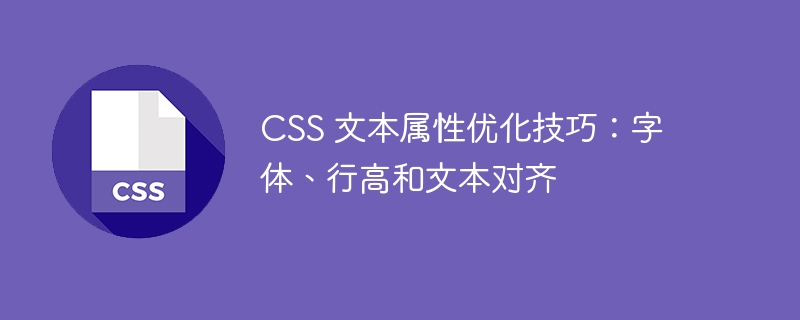

CSS text attribute optimization tips: font, line height and text alignment
In web design, text is an integral part. By optimizing CSS text properties, we can improve the readability and user experience of our website. This article will share some optimization tips, including choosing the right font, setting reasonable line height and text alignment, and provide specific code examples.
1. Choose the right font
Choosing the right font is crucial to the readability and visual effect of the web page. Here are a few key factors to consider:
The following is a CSS example for setting font attributes:
body { font-family: Arial, Helvetica, sans-serif; font-size: 16px; font-weight: normal; line-height: 1.5; color: #333333; }
2. Set a reasonable line height
The line height refers to the vertical distance between each line of text spacing. Proper line height settings can improve the reading experience and make text easier to scan. Here are some tips for setting row heights:
The following is a CSS example for setting line height:
p { line-height: 1.5em; }
3. Text alignment
Text alignment can affect the neatness and readability of the layout. Common text alignment methods include left alignment, right alignment, center alignment, and justified text. Here are some suggestions:
The following is a CSS example for setting text alignment:
h1 { text-align: center; } p { text-align: justify; }
Conclusion:
By optimizing CSS text properties, we can improve the readability and readability of web pages user experience. Choosing appropriate fonts, setting reasonable line heights and text alignment can make web content easier to read and understand. I hope the optimization tips shared in this article will be helpful to your web design.
The above is the relevant content of CSS text attribute optimization techniques. By choosing the right fonts, setting reasonable line heights, and text alignment, we can improve the readability and user experience of our web pages. During the actual development process, adjustments are made according to specific needs and tested on different devices to ensure the best results.
The above is the detailed content of CSS text property optimization tips: font, line height, and text alignment. For more information, please follow other related articles on the PHP Chinese website!




